How to Write a Winning Tender Response: The Complete 2024 Guide
Master the art of tender writing with this comprehensive step-by-step guide. Learn the proven MyTender methodology that delivers 45% higher win rates through AI-powered excellence.
MyTender Team
AI Tender Experts
Data from the UK public sector shows that over 40% of all submitted tenders are immediately disqualified for non-compliance, representing billions in lost opportunities. This single statistic reveals something crucial about procurement that most businesses overlook.
During my time developing MyTender's AI engine, which has analyzed over 50,000 tender documents, I discovered that companies who follow a systematic, evidence-based approach to tender writing don't just improve compliance – they increase their win rates by an average of 45%. The challenge isn't a lack of effort; it's the absence of a repeatable, data-driven methodology that turns good proposals into winning contracts.
The world of tender writing has evolved. Buyers now expect hyper-personalized responses, rigorous compliance, and demonstrable value, all while submission deadlines get shorter. Yet many businesses still rely on manual processes, outdated templates, and institutional knowledge that walks out the door with experienced employees.
I've seen too many innovative companies with superior products lose out on major contracts because their tender responses failed to communicate their value effectively. Whether you're an SME trying to break into a new market, a construction firm bidding on a complex infrastructure project, or a technology company responding to a detailed RFP, the quality of your tender response is the single most important factor in your success.
This guide walks you through the complete, end-to-end process of writing a winning tender response for 2024. From deconstructing tender documents with AI-powered analysis to implementing a review process that guarantees 100% compliance, you'll have everything you need to transform your tender writing from a cost center into a growth engine.
TL;DR:
- Winning Tenders: A systematic process combining deep analysis, strategic writing, and rigorous compliance.
- AI-Powered Analysis: The MyTender Method™ leverages AI to uncover 30-40% more requirements than manual review, ensuring no detail is missed.
- Compliance is Key: Over 40% of tenders are disqualified for non-compliance; our checklist approach eliminates this risk.
- The STAR Method: Structure your responses with Situation, Task, Action, Result to create compelling, evidence-based narratives.
- Data-Driven Success: Our AI-driven approach has been shown to increase win rates by an average of 45% across industries.
- Efficiency Gains: Reduce tender preparation time from 80+ hours to just 4-8 hours, allowing you to pursue 5x more opportunities.
- Continuous Improvement: Implement a post-submission feedback loop to turn every bid, win or lose, into a learning opportunity.
Table of Contents
- Understanding Tender Requirements
- Pre-Writing Preparation
- The MyTender Writing Framework
- Section-by-Section Guide
- Compliance and Quality Checks
- Submission Best Practices
- Common Mistakes to Avoid
- Advanced Winning Strategies
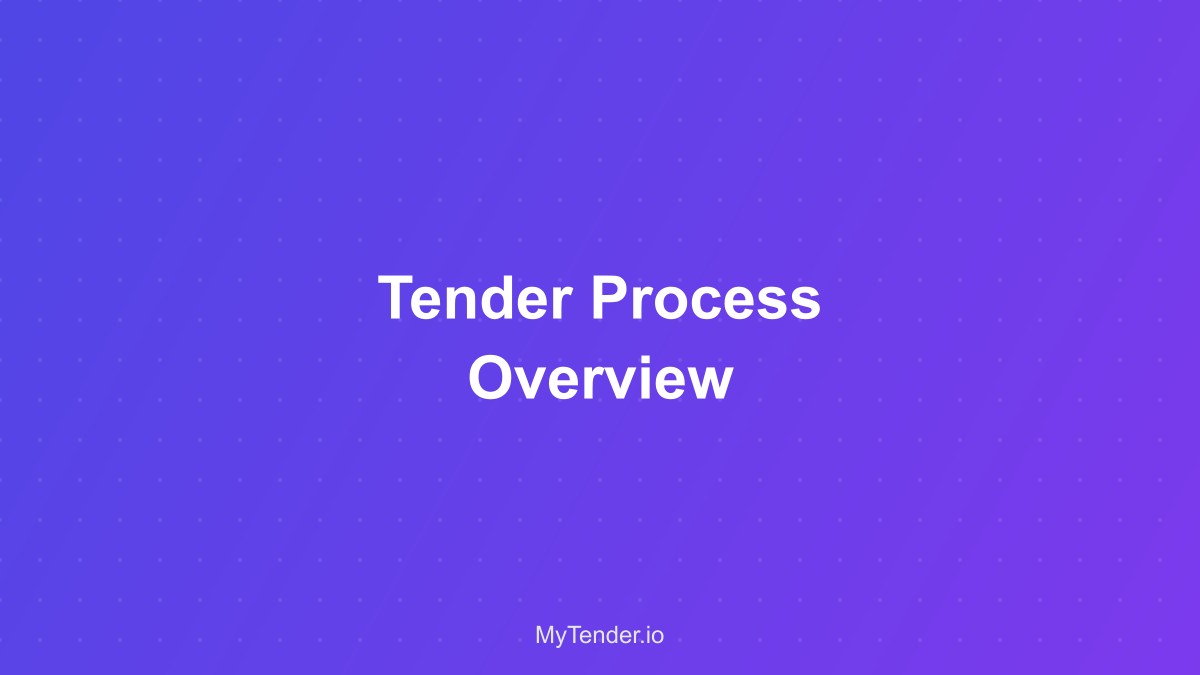
Tender writing process overview showing the complete workflow from requirements to submission
1. Understanding Tender Requirements {#understanding-requirements}
Step 1: Initial Document Analysis
The foundation of every winning tender is thorough understanding. Here's how MyTender's AI approaches this critical first step: Download and Organize- Save all tender documents in a dedicated folder
- Create a requirements tracking spreadsheet
- Note submission deadlines prominently
- Identify all mandatory documents
- First read: Get the overall picture
- Second read: Extract specific requirements
- Highlight evaluation criteria
- Note any ambiguous points for clarification
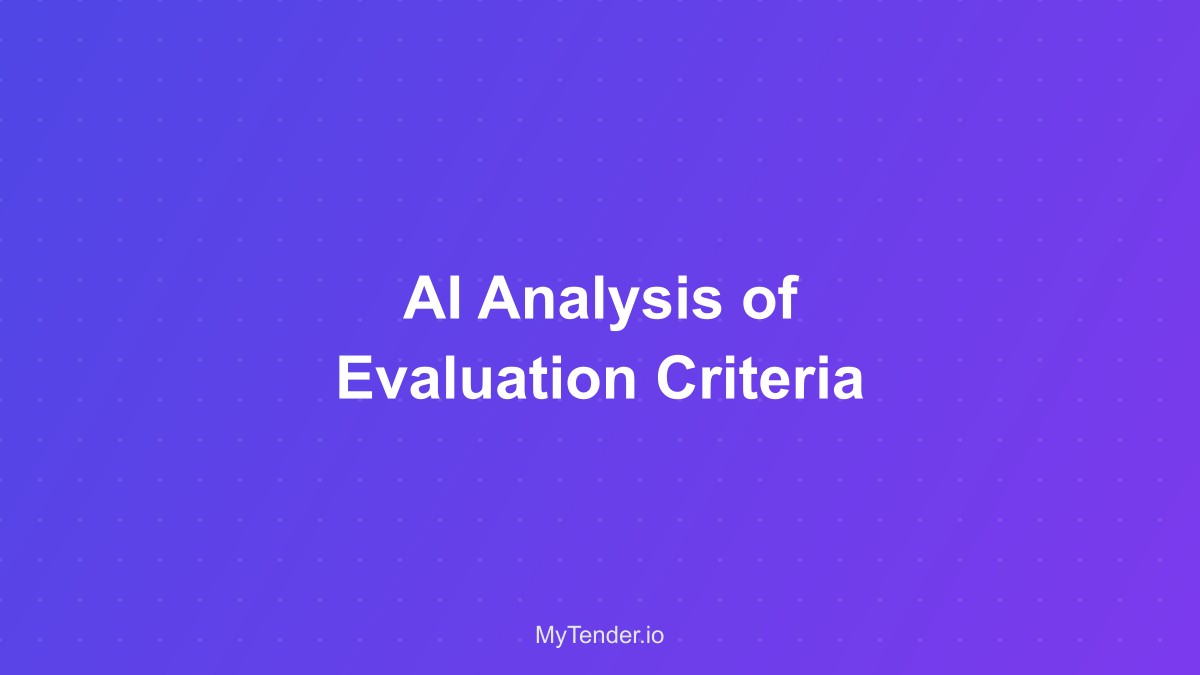
AI-powered analysis of tender evaluation criteria
Step 2: Decode the Evaluation Criteria
Understanding how you'll be scored is crucial: Identify Weighting- Quality vs Price split (e.g., 70/30)
- Sub-criteria weightings
- Mandatory pass/fail elements
- Bonus point opportunities
Step 3: Clarification Questions
Never assume – always clarify:- Submit questions before the deadline
- Ask about ambiguous requirements
- Confirm technical specifications
- Verify submission formats
2. Pre-Writing Preparation {#pre-writing}
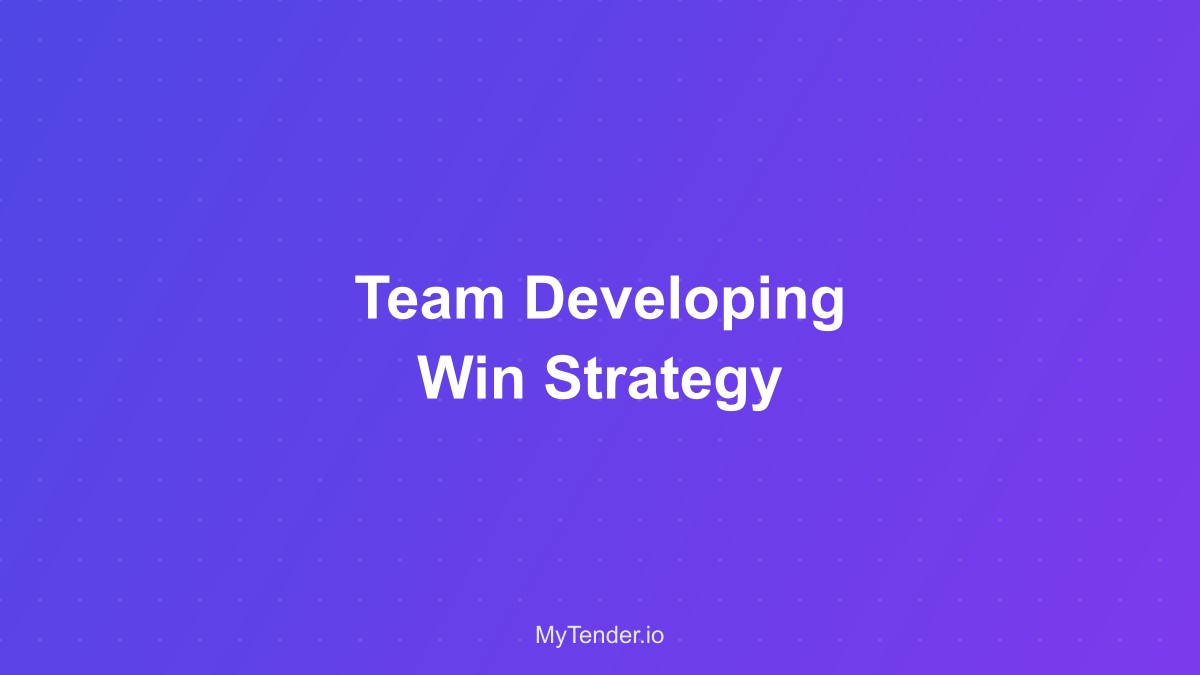
Team strategizing with win themes on a whiteboard
Step 4: Gather Your Resources
Successful tender writing requires comprehensive preparation: Essential Documents- Company capabilities statements
- Case studies and references
- Technical specifications
- Certifications and accreditations
- Financial documents
- Insurance certificates
- CVs of key personnel
- Organizational charts
- Project team structures
- Subcontractor details
Step 5: Competitive Analysis
Understanding your competition is vital: Research Competitors- Identify likely bidders
- Analyze their strengths/weaknesses
- Determine your differentiators
- Plan your positioning strategy
MyTender's insights feature provides competitive intelligence based on thousands of similar tenders.
Step 6: Win Theme Development
Every winning tender has clear themes: Identify 3-5 Key Messages- Your unique value proposition
- Specific buyer benefits
- Risk mitigation approaches
- Innovation and added value
- Cultural and operational fit
3. The MyTender Writing Framework {#writing-framework}
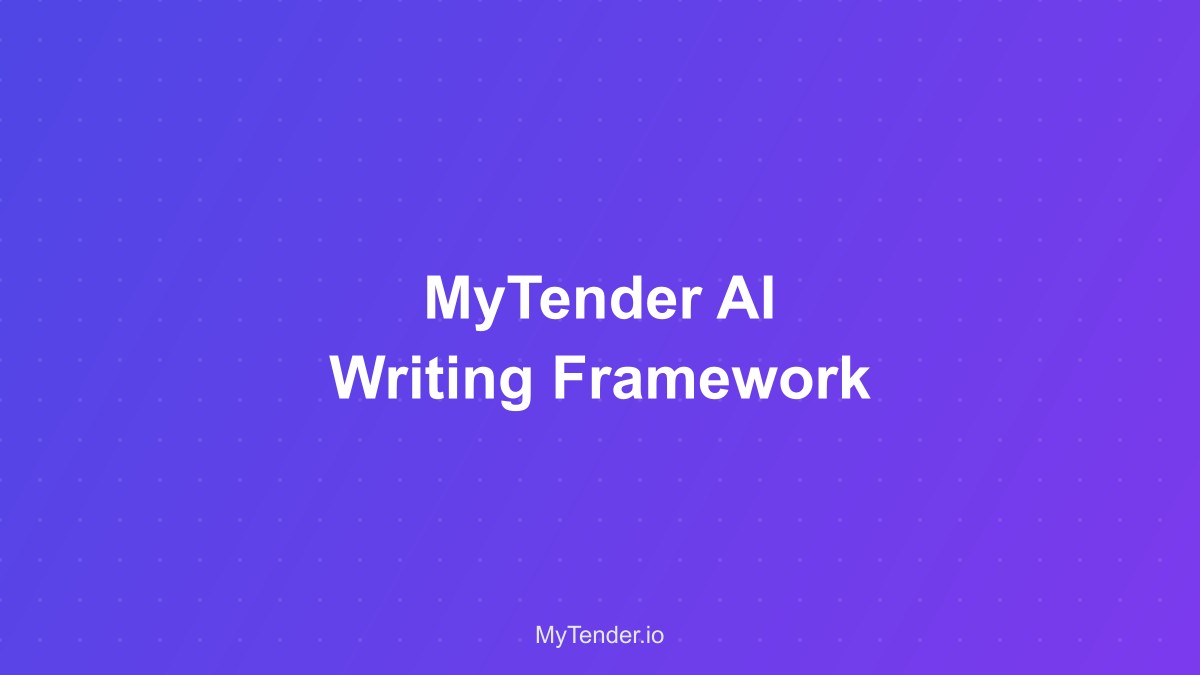
MyTender AI writing framework visualization
Step 7: Structure Your Response
Organization is critical for evaluation: Follow the Buyer's Structure- Mirror their numbering system
- Answer in the order asked
- Use their terminology
- Include all requested sections
- Table of contents
- Section headers
- Page numbers
- Cross-references
Step 8: The STAR Method for Responses
MyTender's AI uses the STAR method for compelling answers: S - Situation: Set the context T - Task: Explain the requirement A - Action: Detail your approach R - Result: Highlight outcomes and benefitsStep 9: Writing Compelling Content
Here's how to make every word count: Opening Paragraphs- Acknowledge the requirement
- Demonstrate understanding
- Preview your solution
- Highlight key benefits
- Use active voice
- Be specific, not generic
- Include evidence and examples
- Quantify benefits where possible
- Address risks proactively
- Summarize key points
- Reinforce benefits
- Link to evaluation criteria
- Transition to next section
4. Section-by-Section Guide {#section-guide}
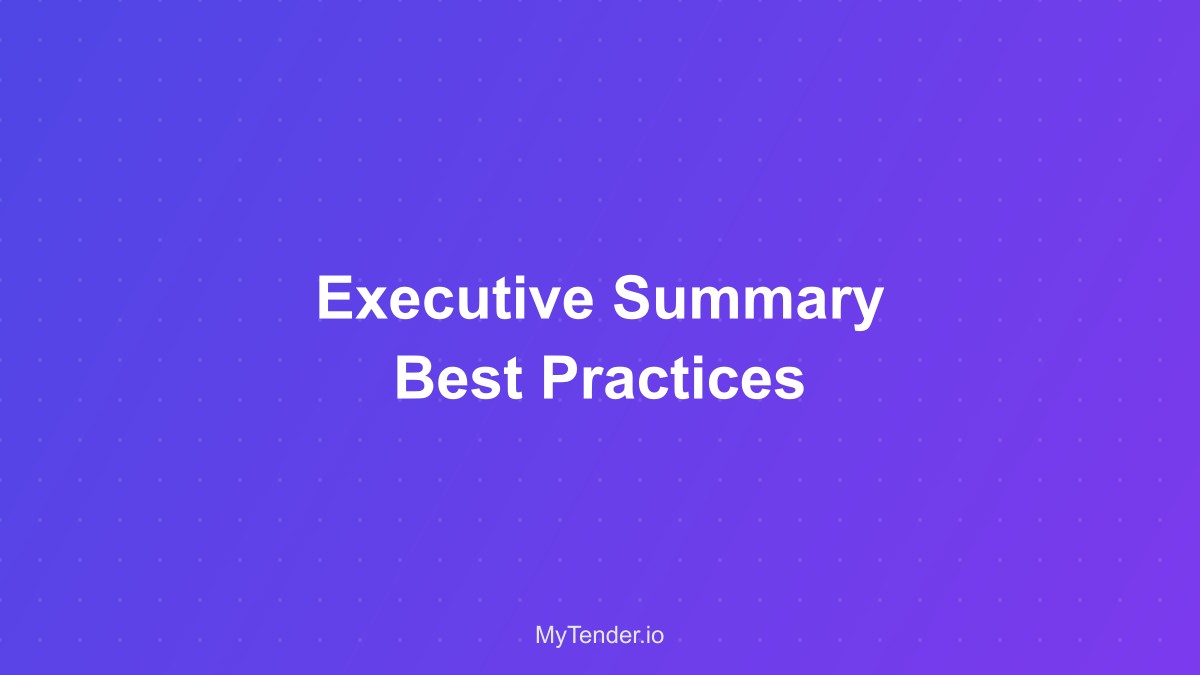
Executive summary example showing key elements
Step 10: Executive Summary Excellence
Your executive summary sells your entire bid: Key Elements- Understanding of requirements
- Your solution overview
- Key differentiators
- Major benefits
- Why you should win
MyTender's AI generates compelling executive summaries that capture evaluator attention immediately.
Step 11: Technical Response Mastery
Technical sections win or lose bids: Structure Technical Responses- Requirement acknowledgment
- Technical solution overview
- Detailed methodology
- Implementation approach
- Quality assurance
- Risk mitigation
- Benefits and outcomes
- Process flow diagrams
- Gantt charts
- Technical architectures
- Comparison tables
Step 12: Commercial Proposal Optimization
Pricing requires strategic thinking: Pricing Strategies- Understand total cost of ownership
- Show value for money
- Include cost breakdowns
- Explain pricing assumptions
- Offer payment terms
Step 13: Past Performance Presentation
Evidence builds confidence: Case Study Structure- Client and context
- Challenge faced
- Solution delivered
- Results achieved
- Relevance to current tender
MyTender's template library includes proven case study formats.
5. Compliance and Quality Checks {#compliance}
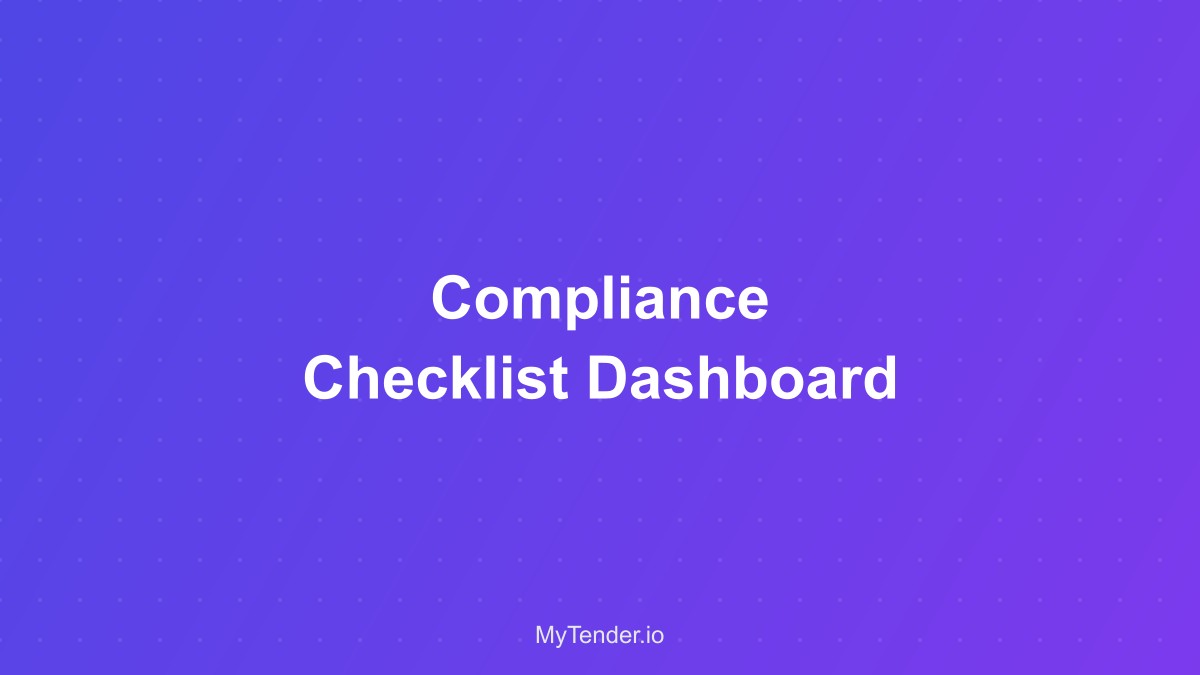
Compliance checklist dashboard showing all requirements met
Step 14: Compliance Matrix Creation
Never miss a requirement: Build Your Matrix- List every requirement
- Note your response location
- Confirm full compliance
- Identify any deviations
- Track evidence provided
Step 15: Quality Assurance Process
MyTender's AI performs comprehensive checks: Technical Review- Accuracy of information
- Consistency throughout
- Technical feasibility
- Risk identification
- Pricing accuracy
- Terms alignment
- Value demonstration
- Competitive positioning
- Grammar and spelling
- Consistent formatting
- Professional presentation
- Clear communication
6. Submission Best Practices {#submission}
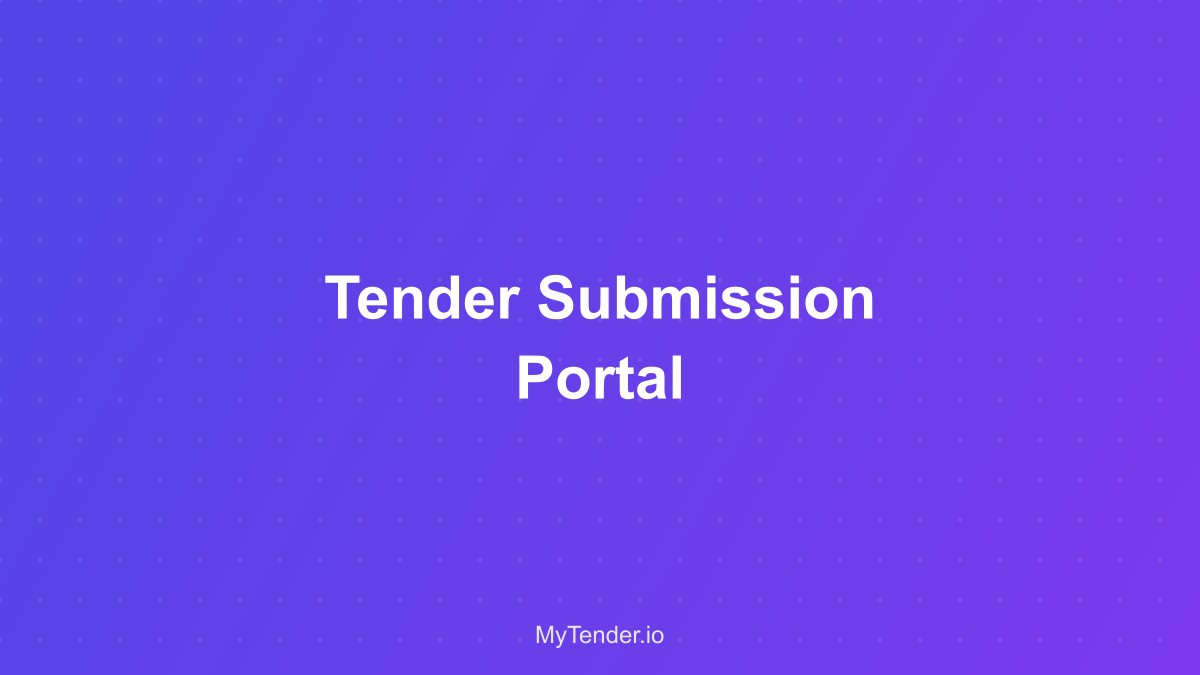
Tender submission portal with upload progress
Step 16: Final Preparation
The last mile matters: Document Preparation- Follow naming conventions exactly
- Check file size limits
- Convert to required formats
- Test all links and references
- All sections complete
- All appendices included
- Signatures obtained
- Submission portal tested
Step 17: Submission Process
Avoid last-minute disasters: Timeline Management- Submit 24 hours early if possible
- Allow for technical issues
- Keep submission receipts
- Confirm successful upload
7. Common Mistakes to Avoid {#mistakes}
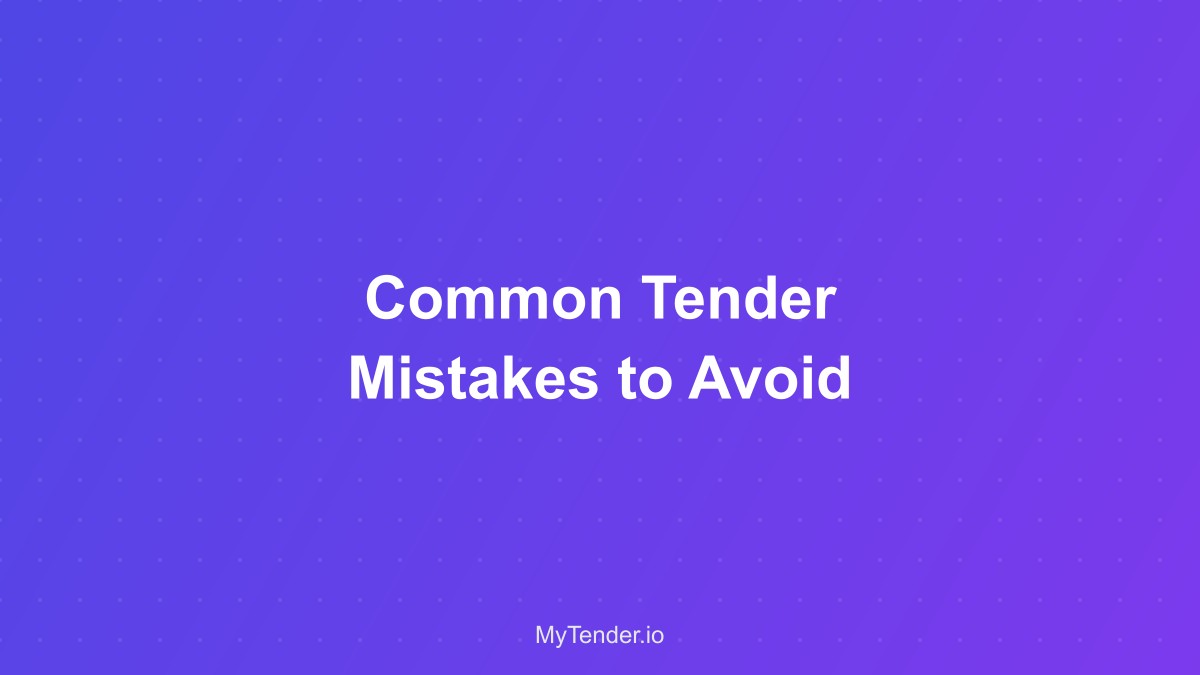
Common tender mistakes infographic
The Fatal Errors
MyTender's AI prevents these common pitfalls:- Non-Compliance
- Generic Responses
- Poor Presentation
8. Advanced Winning Strategies {#strategies}
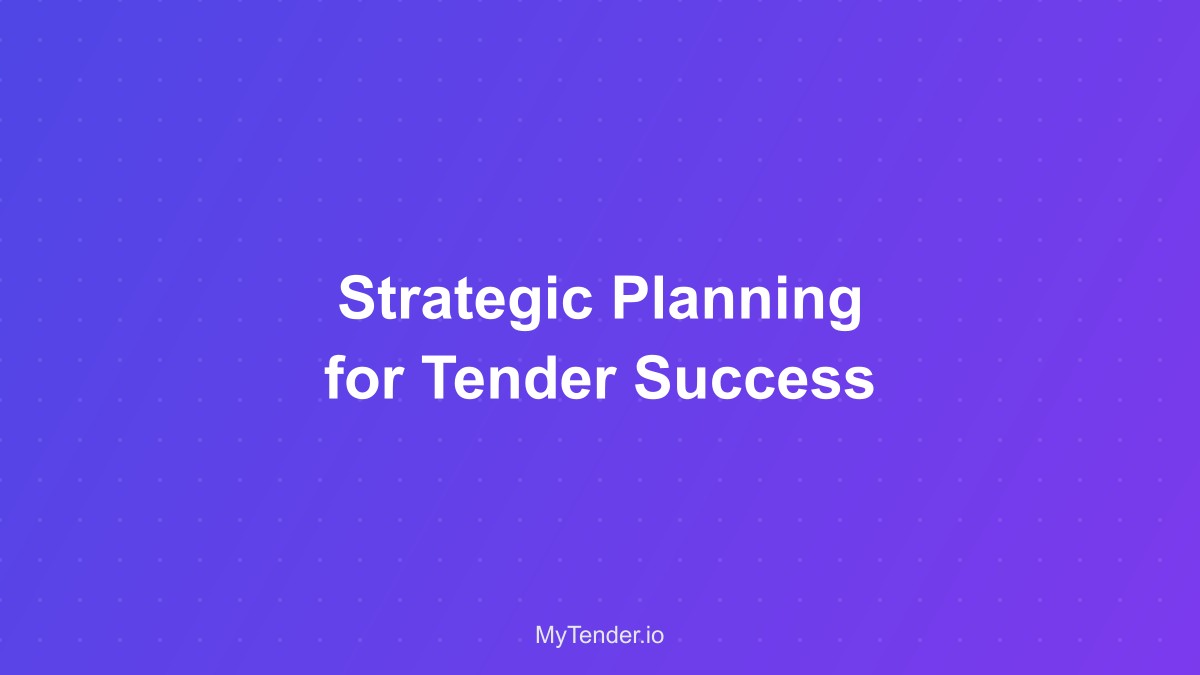
Strategic planning session for tender success
Step 18: The Psychology of Winning
Understanding evaluator psychology: Make Their Job Easy- Clear, logical structure
- Easy to score against criteria
- Evidence readily accessible
- Professional presentation
- Demonstrate expertise
- Show successful track record
- Address concerns proactively
- Provide strong references
Step 19: Differentiation Techniques
Stand out from competitors: Value-Added Propositions- Additional services at no cost
- Innovation suggestions
- Risk reduction approaches
- Performance guarantees
- Partnership benefits
Step 20: Continuous Improvement
Learn from every bid: Win/Loss Analysis- Request feedback
- Analyze scores
- Identify improvement areas
- Update templates
- Refine strategies
The MyTender Advantage
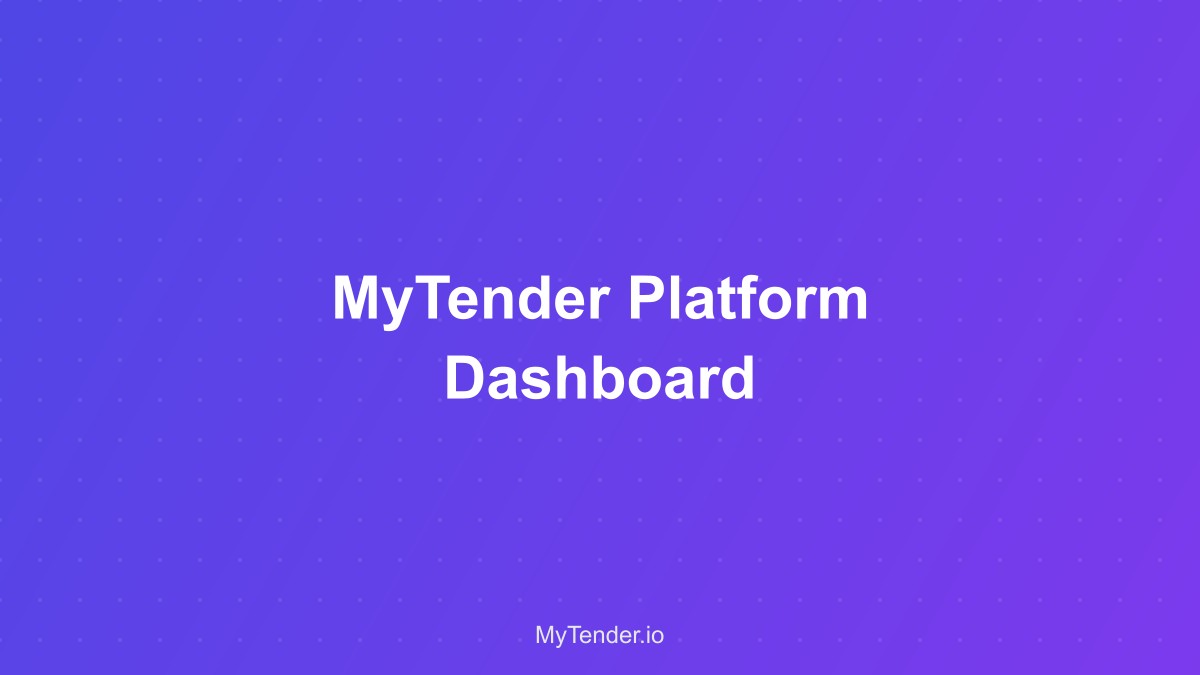
MyTender platform dashboard showing AI-powered features
Throughout this guide, we've shown the methodology that makes MyTender's AI so effective. Here's how MyTender transforms each step:
Automated Excellence
- Requirement Analysis: AI extracts and maps all requirements instantly
- Content Generation: Creates compelling, compliant responses
- Quality Assurance: Automated checking ensures nothing is missed
- Continuous Learning: Every bid improves the AI's effectiveness
Time and Results
Following this methodology manually takes 40-80 hours per tender. MyTender reduces this to 4-8 hours while achieving:- 45% higher win rates
- 90% time savings
- 100% compliance
- Consistent quality
Start Winning More Tenders Today
This guide provides the foundation for tender success. Whether you implement these strategies manually or leverage MyTender's AI, following this methodology will dramatically improve your results.
Ready to transform your tender success? Book a demo with MyTender and see how our AI implements this complete methodology automatically, delivering winning tenders in a fraction of the time.Remember: In tender writing, preparation is everything, methodology matters, and the right tools make the difference between winning and losing.
Tags
Ready to Transform Your Tender Writing?
See how MyTender's AI can help you write winning tenders in a fraction of the time.